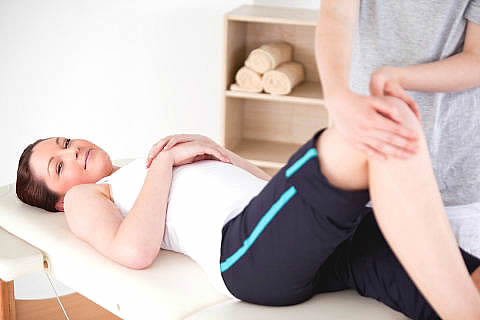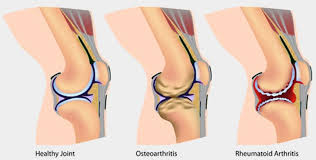Knee joint is one of the most sensitive and vulnerable joints in the body. Knee pain can be acute or chronic. Acute knee pains are generally caused when you fall and hurt your knee. Chronic Pains are more like an ache and they are not related to any specific event or time. Other causes of knee pain include ligament problems, fractures, dislocations, arthritis etc.

There are other forms of arthritis that do affect middle aged and older people. They are,
- Osteoarthritis: This joint disease stems from wear and tear of the knee and the symptoms follow swelling, stiffness and pain. Sometimes this pain even range from acute to chronic.
- Rheumatoid Arthritis: This joint disease arouses the pain in knee joint in a very slow manner. Middle aged women are more prone to this type of arthritis.
- Crystalline Arthritis: When a small granual of sodium urate and calcium phosphate remains in the knee this type of knee pain is caused. This is usually observed mostly in middle aged men.
Reflex Zone Therapy to Treat Knee Joint Problems
Reflexology can be said as the key methods to treat the knee pains. This treatment also keeps your knees strong and healthy.
A. General Treatment of the Entire Body: With the reflexology treatment entire body can be stimulated by applying some pressure or via reflex points on hands and feet to bring about some natural balance and soothing experience. Reflexology treatment can also correspond to some referral areas like knees, elbows, sole, ankle, individual toes etc.
B. Specific Treatment of the Knee: Lateral malleolus is a part of the inner side of the ankle formed by lower end of tibia, a bone present in the inner side of the leg. Starting from the lateral malleolus, move your thumb in the upward direction till you reach a sensitive spot. If you experience an acute pain in the knee joint give a deep, alternating pressure on this spot for about 2 minutes. Repeat this reflexology principle twice a day.
Chronic pain in the knee joints can be treated by self help treatment on the outer edge of the heel. Move your thumb on every possible position along this narrow area and whenever you come across a sore spot, try to apply a deep pressure with the tip of your thumb for about a minute. Repeat this reflexology principle twice a day.
C. For Very Severe Pain: In order to treat severe pains in your knee joints you can experiment a new method which helps you reducing the pain slowly. For this, you need to tie small rubber bands to the concerned foot for about 10- 12 minutes. Remove the rubber band if you experience an ache in the toe or if it turns black while doing this. Repeat this when the toe regains its normal color. You can repeat this after an hour if it is necessary.
I hope these techniques will help you treat reflexology yourself and others to get rid of knee joint problem. Please post your queries in the below comments section.
Don’t Miss: The Best Reflexology Foot Massage Machine
Frequently Asked Questions:
Can reflexology help with knee problems?
Reflexology, a practice based on applying pressure to specific points on the feet, might relieve knee issues by stimulating corresponding areas linked to the knees.
Where is the reflexology point for the knee?
In reflexology, the knee point is typically located on the underside of the foot, around the area just below the base of the toes and above the arch. Applying pressure to this region is believed to correspond to the knees, potentially offering relief or support for knee-related discomfort.
Which therapy is best for knee pain?
The best therapy for knee pain depends on the underlying cause and individual circumstances. Options include physical therapy, acupuncture, chiropractic care, and techniques like reflexology or massage.
Which food is not suitable for knee pain?
Foods high in refined sugars, saturated fats, and processed ingredients may exacerbate inflammation and worsen knee pain. Limiting the intake of such foods, including sugary snacks, processed meats, and certain refined carbohydrates, might help manage discomfort in the knees. Instead, focus on a balanced diet rich in fruits, vegetables, lean proteins, and whole grains for potential relief.
How does physiotherapy treat knees?
Physiotherapy addresses knee issues through various exercises, stretches, and techniques tailored to improve strength, flexibility, and mobility. Therapists assess the root cause of knee problems and design personalized programs to alleviate pain, increase range of motion, and enhance overall function. This may involve targeted exercises, manual therapy, ultrasound, or other modalities to aid rehabilitation and promote healing.


Comments are closed